Salomon Sense 4 /Pro
Test Location: Gunnison, Colorado
Test Duration (so far): 160 mi
Stack Height: 21 mm (heel) / 17 mm (forefoot)
Drop: 4 mm
Stated Features:
- Upper: Single layer hydrophobic welded mesh with EndoFit sleeve
- Midsole: Optivibe foam reduces vibration upon foot strike, Profeel Film rockplate
- Outsole: Contagrip® MA rubber for long-term durability and grip on wet, dry, hard, or loose surfaces
- Quicklace system with lace pocket
MSRP: $140.00
Size Tested: US Men’s 11.5
Stated Weight per Shoe (US Men’s Size 9): 272 g / 9.6 oz
Blister Measured Weight per Shoe (US Men’s Size 11.5): 300 g / 10.6 oz
Reviewer: 6’1”, 145 lbs
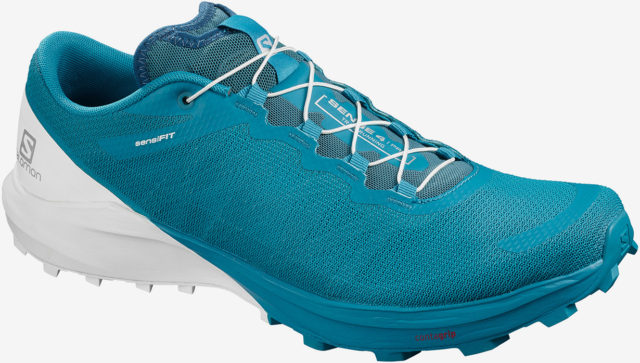
Intro
When I hear the name “Salomon,” the first image that comes to mind is usually Kilian Jornet sprinting up some mountain in a pair of the brand’s bright-red S/Lab trail shoes. Salomon’s S/Lab shoes are certainly eye-catching and cool, but the reality is that most of them are very race-specific (and expensive). So while they’re probably a great match for Kilian, most runners will likely want to look elsewhere for a more all-round shoe. This is where Salomon’s “Pro” series comes in.
The Pro series takes some of the features of S/Lab shoes, adds a bit of extra cushion / support, and lowers the price a little for those of us who aren’t sponsored athletes. The Sense 4 /Pro builds on the extremely light, race-oriented S/Lab Sense 8 to provide a moderately cushioned ride in a fairly lightweight package.
I was excited to try out the Sense 4 /Pro, as it fits right into my usual trail shoe sweet spot with a 4 mm drop, moderate stack height, and reasonably low weight. On paper, the Sense 4 /Pro is pretty similar to the Nike Terra Kiger 5, so I was also curious to compare the two shoes in various settings. I’ve also been simultaneously testing the S/Lab Sense 8 with the goal of figuring out where the S/Lab version of the Sense has an edge over the Pro, and vice versa. After running about 150 miles in the Sense 4 /Pro, I’ve gotten a pretty good sense (sorry, couldn’t help myself) of how it compares to similar shoes from other brands, where it fits into my own running shoe lineup, and in what scenarios it might be worth paying the extra $40 for the S/Lab version of the Sense.
Previous Versions
While the fundamental design of the Sense Pro has remained fairly constant throughout all four versions of the shoe, the Sense 4 /Pro has undergone some pretty significant updates from the Sense Pro 3 (and no, I’m not screwing up the name — Salomon changed the order of the shoe’s name from the Sense Pro 3 to the Sense 4 /Pro just to keep us all on our toes).
I haven’t run in the Sense Pro 3, but I’ll provide a quick rundown of what’s new in the Sense 4 /Pro for reference. First off, the Sense 4 /Pro has the same Contagrip MA rubber outsole as the Sense Pro 3, but the lug pattern has been tweaked ever so slightly to reportedly provide a little extra grip under the inside of the forefoot.
The Sense 4 /Pro’s midsole has also been updated from the “EnergyCell+” material used on the Sense Pro 3 to Salomon’s new “Optivibe” foam. Salomon claims that the Optivibe midsole’s dual-density foam reduces vibration-induced muscle fatigue and provides a smooth ride. The Sense Pro 3 received some criticism for being a little too similar to the race-oriented S/Lab Sense 7 — the two shoes had the same stack height, and the Sense Pro 3 was only marginally more protective due to its full-length rock plate. If you thought that the Sense Pro 3 could’ve used a little extra cushion, you’ll be pleased to hear that the Sense 4 /Pro has a 3mm-higher stack height. Rather than the 18 mm heel / 14 mm forefoot height of the Sense Pro 3, the Sense 4 /Pro has 21 mm of cushioning in the heel and 17 mm in the forefoot.
Finally, the Sense 4 /Pro has a new, single-layer, hydrophobic, welded mesh upper in place of the more “normal” mesh upper of the Sense Pro 3. Between the new upper, extra cushioning, and new midsole material, the Sense 4 /Pro has reportedly gained about 17 g / 0.6 oz per shoe over the previous version.
Fit
As always, we highly recommend trying on any shoe before buying, if at all possible. I’ll provide my thoughts on how the Sense 4 /Pro fits my feet, but they may or may not be applicable to your fit preferences and foot shape. For reference, I’ve got fairly narrow feet and low arches. I like shoes with a secure fit through the heel and midfoot but a moderately wide toebox to allow for some toe splay.
If you’ve read some of my other shoe reviews, you might have noticed that I’ve got a thing for elastic, gusseted tongues. In shoes like the Hoka Evo Speedgoat and Nike Terra Kiger 5, the tongue is anchored to the midsole with a stretchy elastic material that hugs the midfoot and makes for a very secure fit with minimal movement of the tongue while running.
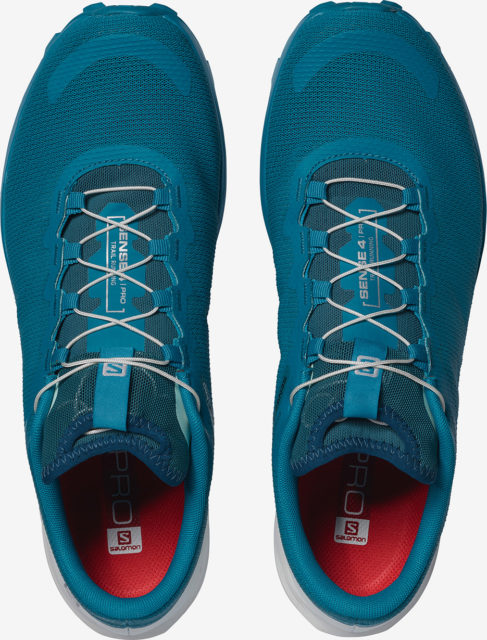
While lots of brands are now doing this, I’m pretty sure Salomon was among the first — and the Sense 4 /Pro demonstrates that they still do it better than just about anyone else. The Sense 4 /Pro’s tongue is essentially a stretchy elastic sleeve that’s completely separate from the rest of the upper. When I put on the shoe, the elastic holds my foot in place before I even tighten the laces. It’s awesome. With that said, the midfoot is pretty narrow, so the elastic could feel a little too tight for runners with very wide feet and / or high arches.
While the Sense 4 /Pro’s heel and midfoot fit my feet very well, the toebox is a little narrow for my preferences. It feels fairly similar to the Hoka Evo Speedgoat width-wise, and definitely pushes my toes together a bit more than I’d prefer. The Nike Terra Kiger 5 has a slightly wider toebox, while the Sense 4 /Pro has a slightly more secure midfoot / heel than both the Terra Kiger 5 and Evo Speedgoat. Overall, the fit of the Sense 4 /Pro is very secure and fairly comfortable for me, but could use some extra forefoot width in my opinion. If you have wide feet, I’d expect the Sense 4 /Pro to feel a bit too narrow throughout.
Weight
The Sense 4 /Pro’s stated weight of 272 g / 9.6 oz (US Men’s size 9) is honestly a bit heavier than what I would expect for a fairly low-stack shoe — especially one that’s marketed as a good racing and faster-training option. For comparison, here’s how the Sense 4 /Pro compares to similar shoes from a few other brands. All stated weights are based on a US Men’s Size 9:
195 g / 6.9 oz – Salomon S/Lab Sense 8
241 g / 8.5 oz — Altra Superior 4.0
258 g / 9.1 oz — Hoka One One Torrent
264 g / 9.3 oz — Nike Terra Kiger 5
272 g / 9.6 oz — Salomon Sense 4 /Pro
292 g / 10.3 oz — La Sportiva Kaptiva
303 g / 10.7 oz — Saucony Peregrine 10
There are definitely lighter options out there, but the Sense 4 /Pro still isn’t drastically heavier than similar shoes from other brands. Much like the Nike Terra Kiger 5, the Sense 4 /Pro doesn’t feel overly cumbersome or heavy once I’m actually running in it. The precise fit and fairly firm cushioning make for a pretty nimble-feeling shoe. With that said, I think it would feel a bit quicker at faster paces if Salomon could shave a few grams.
Upper
I think, overall, that Salomon tends to a really good job with their shoe uppers. Like many of Salomon’s trail shoes, the Sense 4 /Pro’s upper includes a few key technologies that are worth talking about: the EndoFit Sleeve, Internal SensiFit System, and Quicklace System.
First off, “EndoFit” is essentially Salomon’s version of an elastic, gusseted tongue. It’s a stretchy elastic sleeve that extends from the bottom of the lacing system to the top of the tongue and provides the excellent midfoot fit that I mentioned earlier.
Next up, the Sensifit system consists of a series of nylon strips attached to the inside of the upper mesh that run from the lace eyelets to the midsole. Its goal is to add extra structure once you tighten the laces and prevent your feet from sliding side-to-side in the shoe.

Finally, Salomon uses Quicklaces in place of a regular lacing system on most of their shoes, which basically just consists of a thin nylon string with a toggle that eliminates the need for tying laces. The top of the tongue has a stretchy mesh pocket in which you can tuck the toggle and extra lace to keep it from flopping around during your run. So there you have it — now you can impress (or maybe just annoy) all your friends on your next run with fun facts about fancy upper technologies. But how well do they actually work?
As I said in the “Fit” section, I’m a big fan of Sense 4 /Pro’s upper, mostly thanks to these three technologies. Between the EndoFit sleeve and Sensifit system, the Sense 4 /Pro has a very locked-down fit through the midfoot. The EndoFit sleeve does mean that the Sense 4 /Pro’s upper basically has two layers throughout the midfoot. I was initially concerned that this might make the shoe less breathable, but both the elastic material used in the sleeve and the welded mesh used in the rest of the upper are light / thin enough that I haven’t had any issues with breathability so far.
The Quicklace system will probably be a bit more contentious. Personally, I like how easy the Quicklaces make it to get the shoe on, tighten the laces, and get going. With that said, they do limit how much you can customize the fit of the Sense 4 /Pro, compared to a conventional lacing system. For example, in shoes with regular laces, I’ll often pull some slack into the bottom of the lacing system to give my toes a bit more space and then tighten the top ⅔ of the laces to get a secure midfoot fit. Because the Quicklaces are a thin, round nylon string, they slip through the lace eyelets much more freely than regular laces do. This makes it pretty much impossible to tighten or loosen any part of the lacing system without tightening or loosening the whole thing. I don’t mind the small loss in customization for the major gains in convenience, but some runners might find it annoying.
The rest of the Sense 4 /Pro’s upper is made of an interesting, single-layer welded mesh material. Unlike the fabric mesh used on most shoes, the Sense 4 /Pro’s upper material feels more like some kind of woven plastic. It’s vaguely reminiscent of the MATRYX material used for the Evo Speedgoat’s upper, but unlike the Evo Speedgoat, the Sense 4 /Pro’s upper is still woven into a mesh-like layer with visible holes. The Sense 4 /Pro’s upper is thin, breathable, and flexible, and so far seems to be durable as well.
It’s worth noting that Salomon markets the Sense 4 /Pro’s upper as “water repellant,” which is definitely not the same thing as waterproof. The mesh upper doesn’t keep water from getting into the shoe at all, but because the mesh is more like plastic than fabric, it doesn’t absorb any water and allows the shoes to drain very quickly. So while you shouldn’t expect the Sense 4 /Pro to keep your feet dry in the way that a waterproof shoe would, it does drain quickly on runs in wet conditions or with lots of creek crossings.
Midsole
The Sense 4 /Pro uses Salomon’s new Optivibe midsole material (I know — more shoe jargon, but bear with me). Most of the Sense 4 /Pro’s midsole seems like a fairly standard, moderately firm foam that feels pretty similar to the “React” cushioning found on the Nike Terra Kiger 5. But the Sense 4 /Pro also has a softer Optivibe foam insert in the heel, which Salomon claims will help reduce vibrations upon impact. The basic idea of the Optivibe technology is to provide a slightly more forgiving ride without impacting energy return / efficiency.
It sounds great on paper, but I honestly haven’t been able to tell a difference between the Sense 4 /Pro’s midsole cushioning and other similar shoes like the Nike Terra Kiger 5. Both shoes feel fairly firm and energetic, which is great for short / fast runs but leads to foot fatigue on longer runs for me. If the Optivibe insert is reducing vibrations in the Sense 4 /Pro, it’s a small enough effect that I can’t feel the difference on trail.
Regardless, the Sense 4 /Pro’s midsole works well for me on runs of up to ~two hours. Much like the Nike Terra Kiger 5, my feet start getting tired / sore after more than two hours in the Sense 4 /Pro. For longer runs, I’d favor a shoe with a softer, more cushioned midsole like the Altra Timp 2.0 or Hoka Evo Speedgoat.
The Sense 4 /Pro does feel ever so slightly more protective than the Terra Kiger 5, but I attribute that more to the Sense 4 /Pro’s extra 6 mm of midsole cushioning than anything else. In combination with its fairly firm midsole cushioning, the Sense 4 /Pro’s full-length rock plate does a good job of protecting from sharp rocks and roots. I’ve done several runs in the Sense 4 /Pro on extremely rocky, technical trails, and haven’t had any problems with rocks poking through the midsole.
Aside from the cushioning, I’ve found that the Sense 4 /Pro’s midsole geometry (and 4 mm drop) definitely promotes a forefoot strike rather than a midfoot or heel strike. The toe of the shoe curves up slightly, which makes for a smooth, fast ride when forefoot striking. I’m usually a forefoot striker anyway, so I’ve enjoyed this feature of the Sense 4 /Pro. But if you’re more of a heel striker, it could feel a little awkward.
Outsole
The Sense 4 /Pro uses Salomon’s proprietary Contagrip MA rubber, which is Salomon’s “all-terrain” outsole material. The Sense 4 /Pro’s outsole features moderately deep lugs that I’ve found to grip well in most settings. Like most trail shoes that aren’t designed specifically for mud, the Sense 4 /Pro does slip a little in muddy, loose, or snowy conditions.
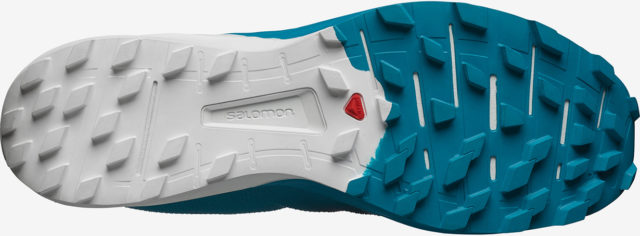
Aside from that though, the Contagrip MA rubber provides ample traction on dry trails, rocks, roots, and most other surfaces. The Sense 4 /Pro’s outsole doesn’t feel quite as grippy as the Hoka Evo Speedgoat’s Vibram MegaGrip outsole, but it definitely provides better traction than the Nike Terra Kiger 5.
On Trail
I’ve used the Sense 4 /Pro on all kinds of terrain, from off-trail slickrock to smooth singletrack. While most of my runs in the Sense 4 /Pro have been around an hour or 1.5 hours, I have tested it out on a few two-plus-hour runs as well. From a performance perspective, I think that the Sense 4 /Pro is impressively consistent across the board. Here’s what I mean by that:
The locked-down midfoot and fairly low stack height make the Sense 4 /Pro extremely stable and secure on technical terrain. I’ve done a few runs in the Sense 4 /Pro that have included extremely loose / rocky sections and lots of steep, off-camber slickrock, and the Sense 4 /Pro feels both very stable and nimble on this kind of terrain. The Sense 4 /Pro isn’t quite as protective as the La Sportiva Bushido II, but it comes closer to the Bushido II’s level of performance on technical terrain than any other shoe I’ve run in recently. The Nike Terra Kiger 5 has a fairly similar fit, but its inferior traction makes it much less confidence-inspiring on technical terrain than the Sense 4 /Pro.
What sets the Sense 4 /Pro apart from the La Sportiva Bushido II is that it still performs well on non-technical terrain. The Bushido II was so stiff and protective that it felt clunky and overbuilt to me on smoother trails. But the Sense 4 /Pro is flexible and light enough that it offers a fairly smooth ride on more moderate trails. It’s not as cushioned and comfortable as the Altra Timp 2.0 or Hoka Evo Speedgoat for long, non-technical runs, but it does feel a bit faster than both of those shoes for shorter, more speed-oriented runs. The Sense 4 /Pro and Nike Terra Kiger 5 feel fairly similar on non-technical terrain, but I’d give the edge to the Sense 4 /Pro as a better all-around shoe because of its better performance on technical terrain.
As I mentioned in the intro, I’ve also been putting some miles in the Salomon S/Lab Sense 8, which is the lighter, race-oriented version of the Sense 4 /Pro. The S/Lab Sense 8 definitely feels lighter and faster than the Sense 4 /Pro, but it’s also way less protective. I love the S/Lab Sense 8 for high-intensity workouts, but it’s too minimal for just about everything else. It also doesn’t offer quite as much traction as the Sense 4 /Pro because of its lower-profile outsole lugs. The Sense 4 /Pro doesn’t feel nearly as fast in a high-intensity workout setting, but it’s definitely a much more versatile shoe than the S/Lab Sense 8. So to answer my question about when it’s worth the extra $40 for the S/Lab Sense, I’d say it’s really only worth it when you’re looking for a shoe to use exclusively for hard workouts and shorter races. For an all-round shoe, the cheaper Sense 4 /Pro will probably be a better option for the majority of runners.
My one complaint about the Sense 4 /Pro is it’s fairly narrow toebox. The lack of space for toe splay contributes to foot fatigue for me and makes me much less likely to use the Sense 4 /Pro on runs longer than about two hours. If Salomon widened the Sense 4 /Pro’s toebox just a little (while keeping the secure heel and midfoot fit), I think it would make an already versatile shoe even more so.
Durability
After about 160 miles, the Sense 4 /Pro is showing a little wear, but generally holding up pretty well.
The upper doesn’t have any signs of fraying so far, though I’ll be curious to see how durable it is in the long run. The single-layer mesh is very thin, so it’ll be interesting to see if it can hold up to a few hundred more miles.
The midsole doesn’t feel like it’s packed out at all so far, and still provides the same firm cushion it did out of the box. The only part of the shoe showing significant wear is the outsole. It’s not wearing down as quickly as the Nike Terra Kiger 5’s outsole did, but the lugs in the forefoot of the Sense 4 /Pro are definitely showing some wear. So far it hasn’t impacted the Sense 4 /Pro’s traction, but at this point it seems like the outsole will be the limiting factor as far as durability is concerned. I’ll provide an update on the Sense 4 /Pro’s longer-term durability once I’ve put some more miles on the shoe.
Who’s It For?
I think that the Sense 4 /Pro is a solid option for trail runners looking for one shoe that can do just about everything, provided its stack height / cushioning is in line with their preferences.
It performs well on both technical and non-technical terrain, and it’s got enough cushion to handle most distances for most people. The Sense 4 /Pro’s lower drop does encourage a forefoot strike, so if you’re a heel striker, it might not be the best option. The same goes for runners with wide feet — the Sense 4 /Pro is pretty narrow throughout, especially in the forefoot, so if you tend to prefer shoes with a more spacious fit it may feel a bit confining. But if you’re a forefoot striker and like a narrow, precise shoe, the Sense 4 /Pro should be right up your alley.
Bottom Line
The Salomon Sense 4 /Pro is something of a jack of all trades. It performs well in most settings, but it’s not spectacular in any one category. It’s almost as secure on technical terrain as the La Sportiva Bushido II, almost as fast as the Salomon S/Lab Sense 8 in workout settings, and almost as comfortable as the Hoka Evo Speedgoat on longer runs. So while the Sense 4 /Pro isn’t necessarily the absolute best shoe in any given category, it reliably performs well in most normal running settings. If you’re looking for one shoe that can handle technical terrain, smooth trails, workouts, and runs up to ~two hours, I think the Sense 4 /Pro is definitely worth trying.

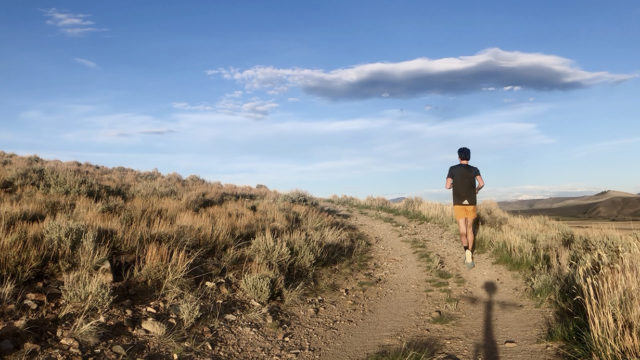
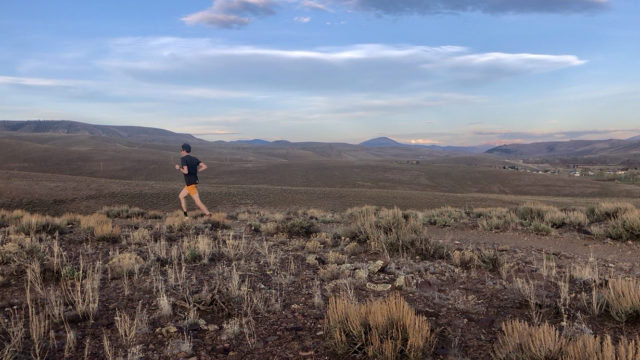
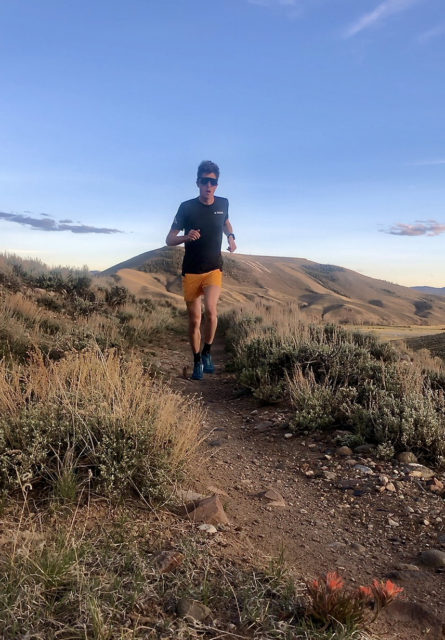
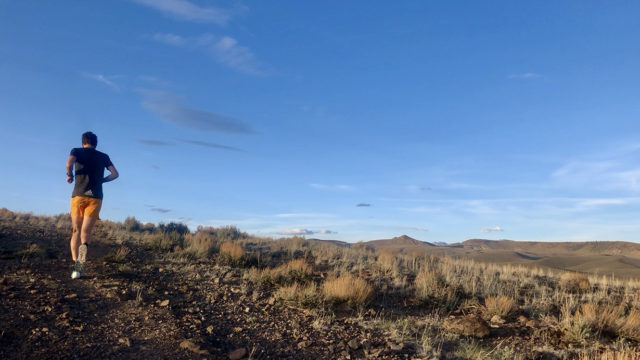
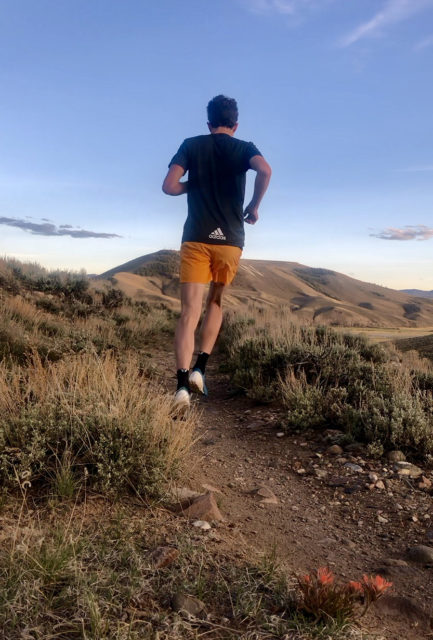
Hey, thanks for this very comprehensive review. I’m looking at these and was wondering what size to get. Reading your comparison to the Kiger 5, this one should fit my feet perfectly.
I also have the Kiger 5. Would you recommend getting the same size?
Hey Marcel- glad it was helpful! The Sense 4/ Pro and Terra Kiger 5 definitely fit pretty similarly — so I’d recommend getting the same size as your Terra Kigers.
Hey Gordon. Thanks for your quick response. On a related note, as I’ve seen you’ve also reviewed the Sense Ride 3, would you go in the same size in that one as well? The 4/Pro would replace my Kiger and the Ride 3 would serve me for longer, not so technical runs.
Hello,
Great and thorough review! Thank you for sharing your thoughts:)
On the down side you’ve got your stack height info completely wrong. The Salomon Sense Pro 4 is 25 and 21mm and the Nike Terra Kiger 5 is 20 to 16mm. Otherwise you’re spot on!
Hey Michael —
We generally try to use the stack heights reported by the same source (often Running Warehouse) because of the variation in how different brands measure stack height. For example, some companies report the actual midsole thickness (not including outsole material and lugs), while others report the total distance between the top of the midsole and the ground (including outsole material and lugs). Unfortunately neither shoe is still listed on Running Warehouse, so I can’t be 100% sure — but my guess is that we’re using the former measure for both shoes, while Salomon is listing the latter on their website.
Thanks for reading!
… if it helps, I am a 10.5 in the Kiger 5 but only wore a 10 in the Kiger 2.
Hey Marcel- I haven’t actually run in the Sense Ride 3 (one of our other reviewers reviewed that one), but I have been the same size (11.5) in every Salomon shoe I have run in (S/Lab Ultra, S/Lab Sense 8, Sense 4/ Pro) — so I would expect the Sense Ride 3 to fit similarly.
This was a really helpful review, thank you!
Great review of a really good shoe. I’ve run in most of the usual suspect brands – these shoes by far have been the best all-rounders. I got two pairs to rotate and now up to ~400 miles on each pair. Strangely, one pair has more wear on the outsole than the other in the mid-foot area despite running same general terrain (North Phoenix preserve trails, hard packed desert, rocky granite and sharp quartz) with occasional mountain runs in Sedona & Flagstaff. Also, the exact same lugs in the heel section of each pair wore or ripped out in the exact same spot but never affected grip or confidence in what was happening under foot. Uppers have held up with no problem. Only in the last 25-30 miles (370ish) have they lost a bit of their bounce and are headed for retirement. They’ve been great trainers for the S/Lab Sense 8 to wear on race day.
This shoe sounds awesome but it seems like they stopped making it. Do you have any idea what shoe took its place in the Salomon lineup or which shoe is most similar?
Hey John —
Unfortunately you’re right, Salomon discontinued the Sense 4 /Pro some time last year. As far as I can tell, none of the current shoes in their lineup are taking its place, so your best bet would probably be to check out similar shoes from other brands. The Nike Terra Kiger 7 is fairly similar on paper, though I’ve only run in version 5 and can’t speak to how the current version compares to the Sense 4 /Pro. You might also check out the Hoka Torrent 2. If all else fails, it looks like a couple websites still have limited size runs of the Sense 4 /Pro available, so you might be able to track down a pair in your size. Good luck!